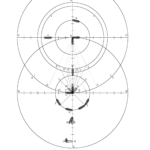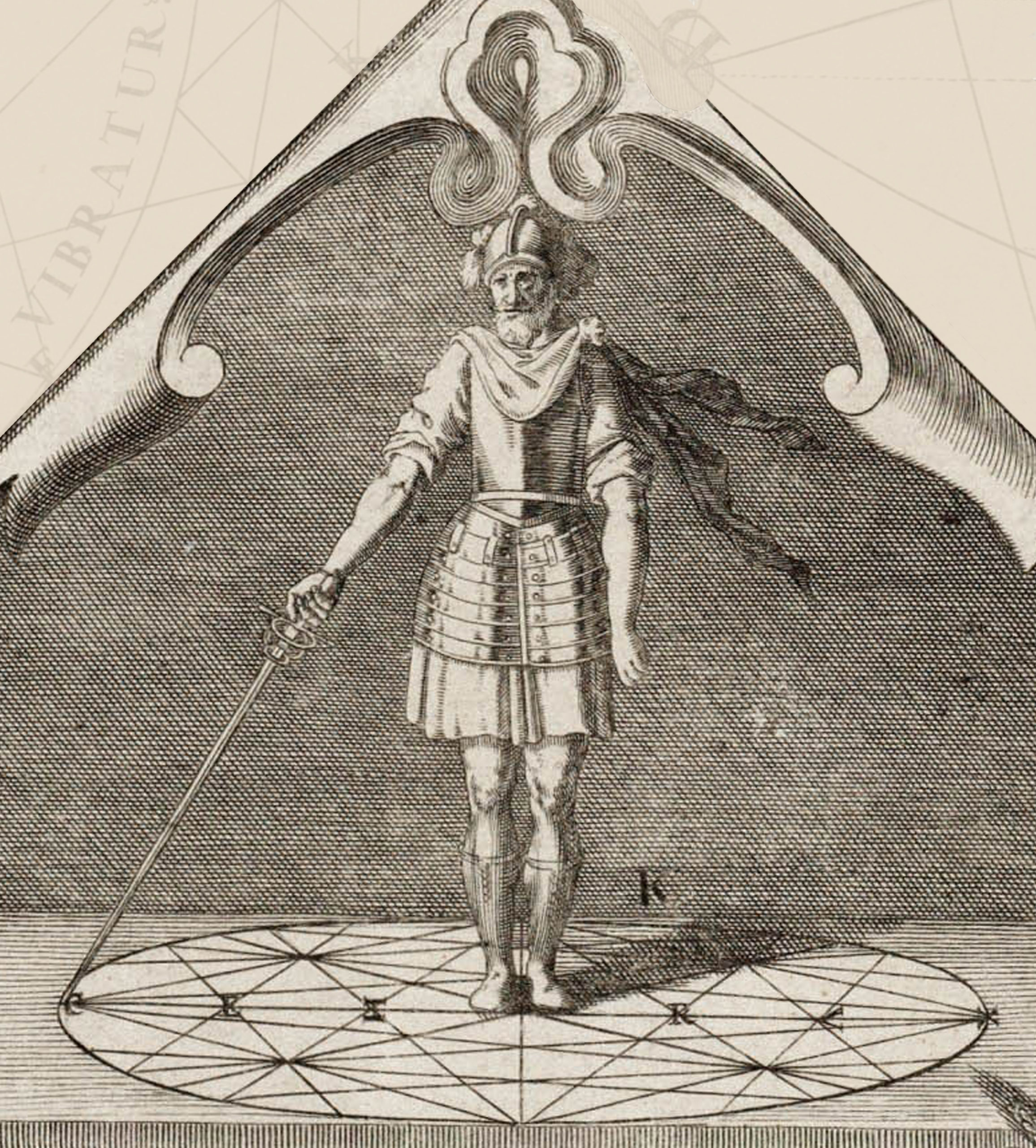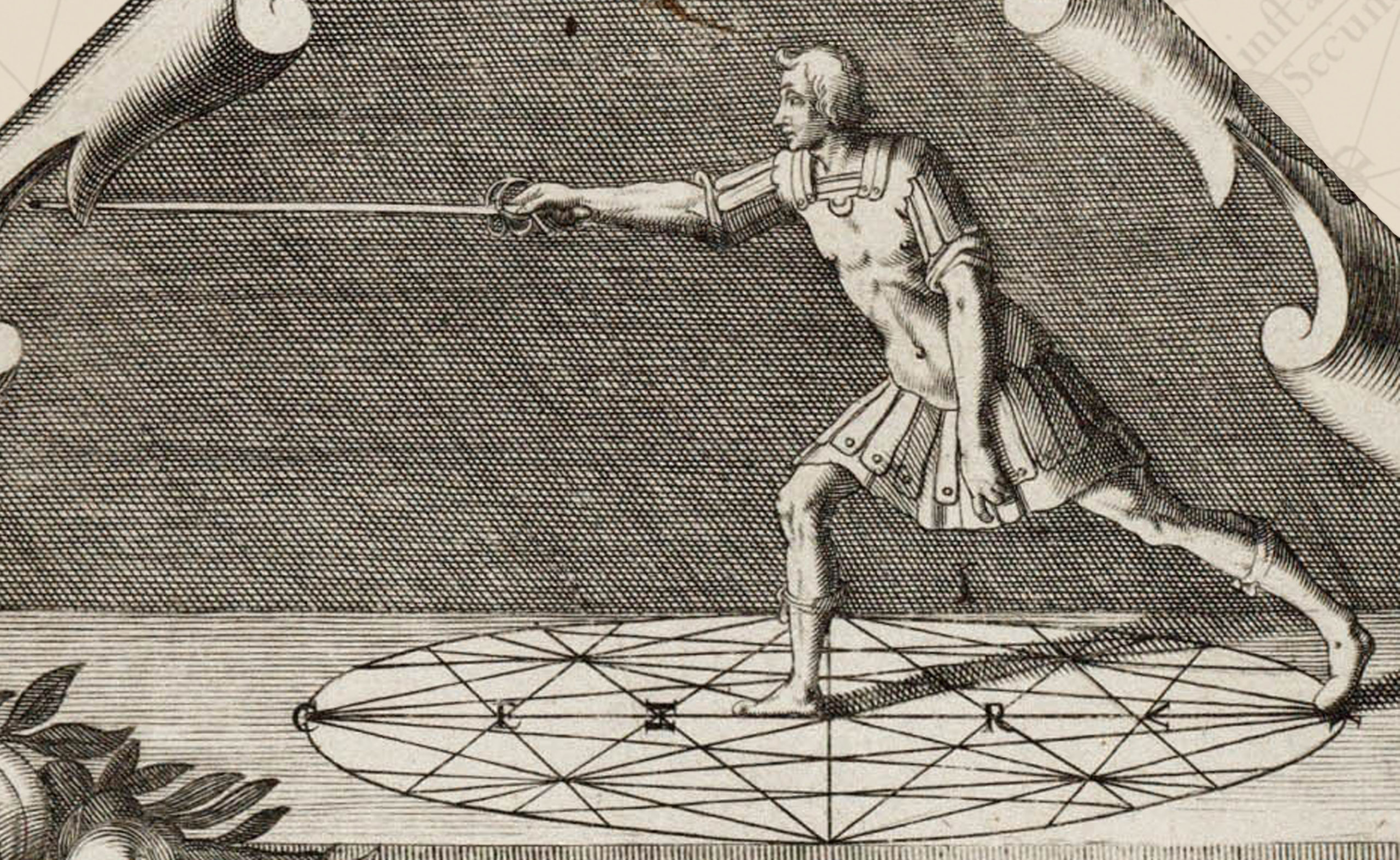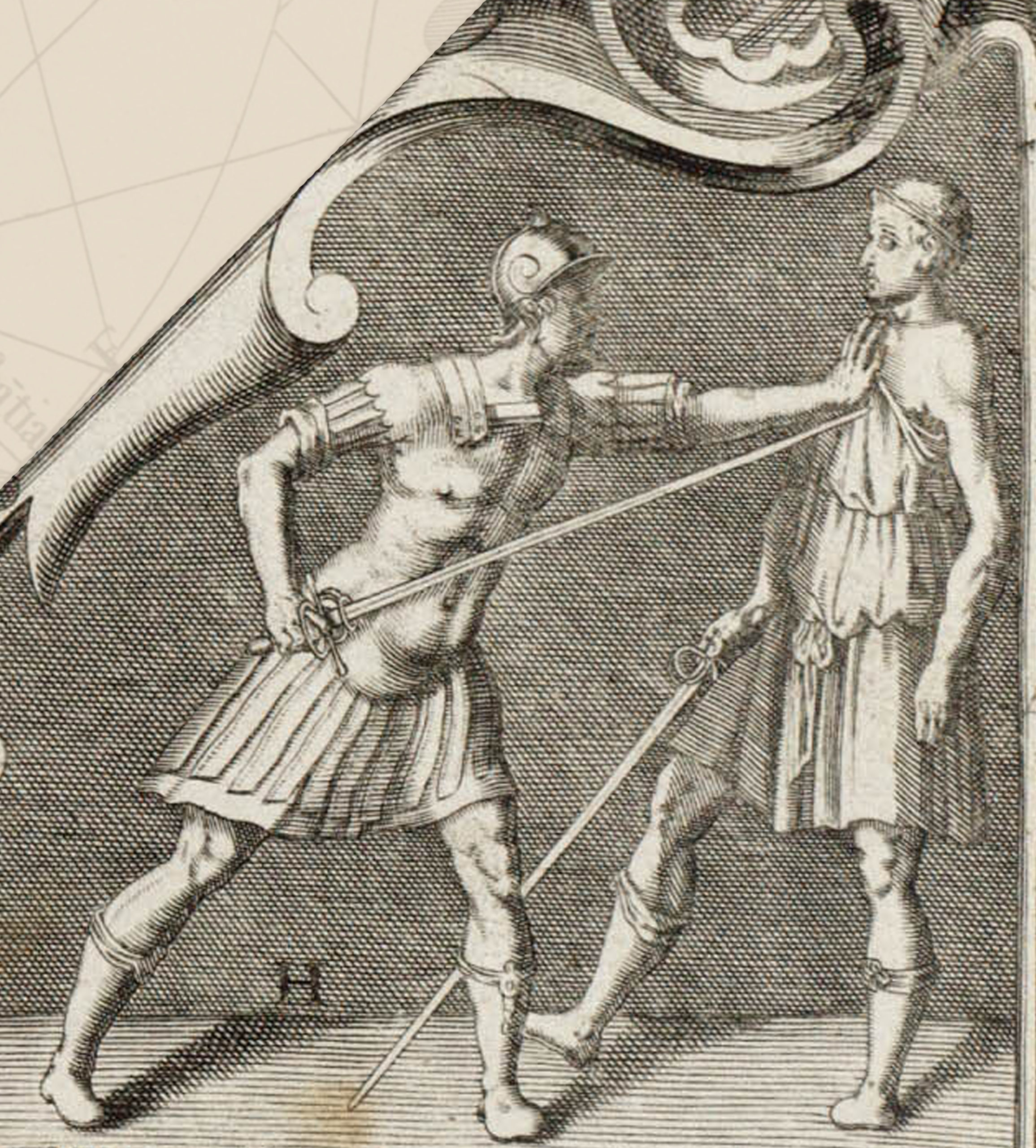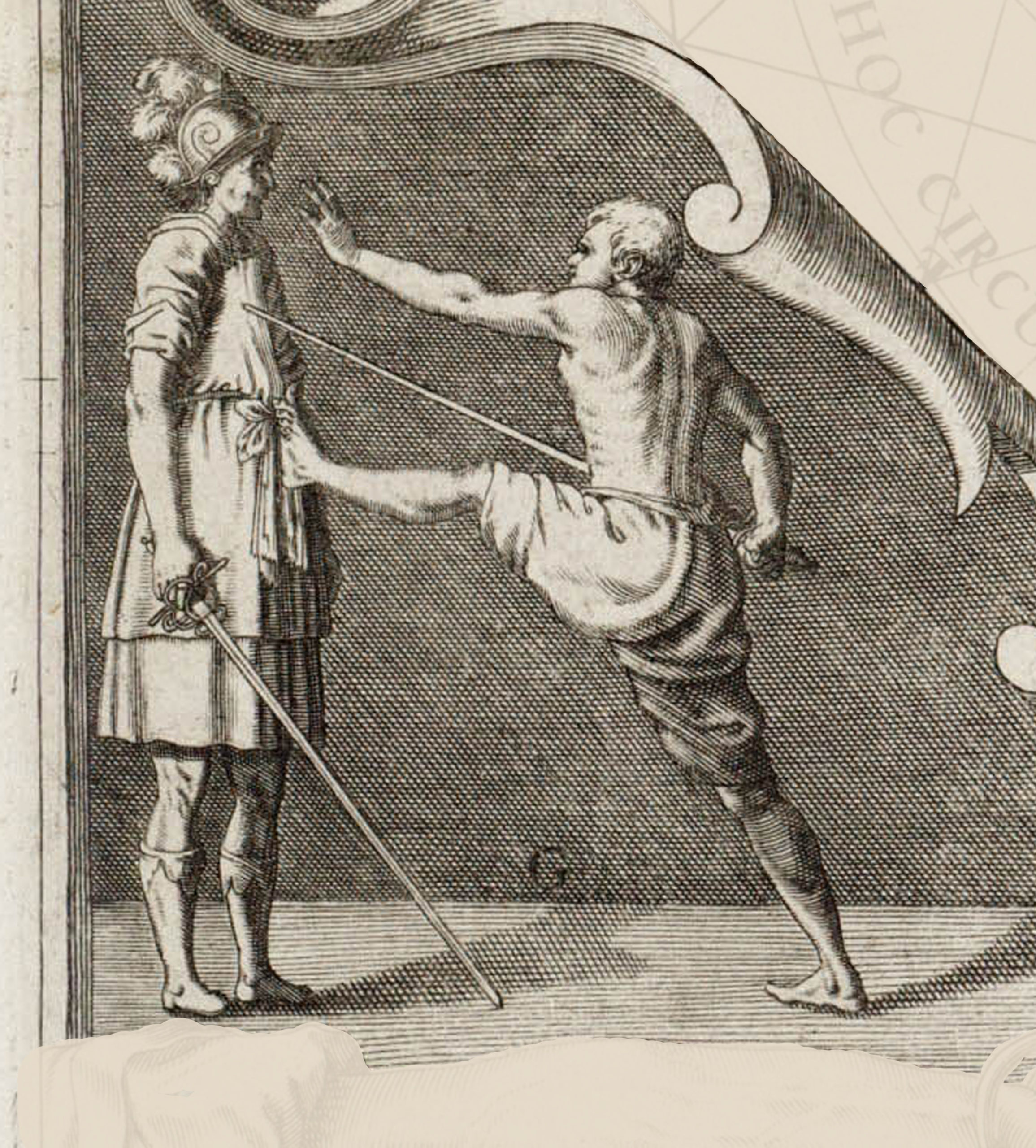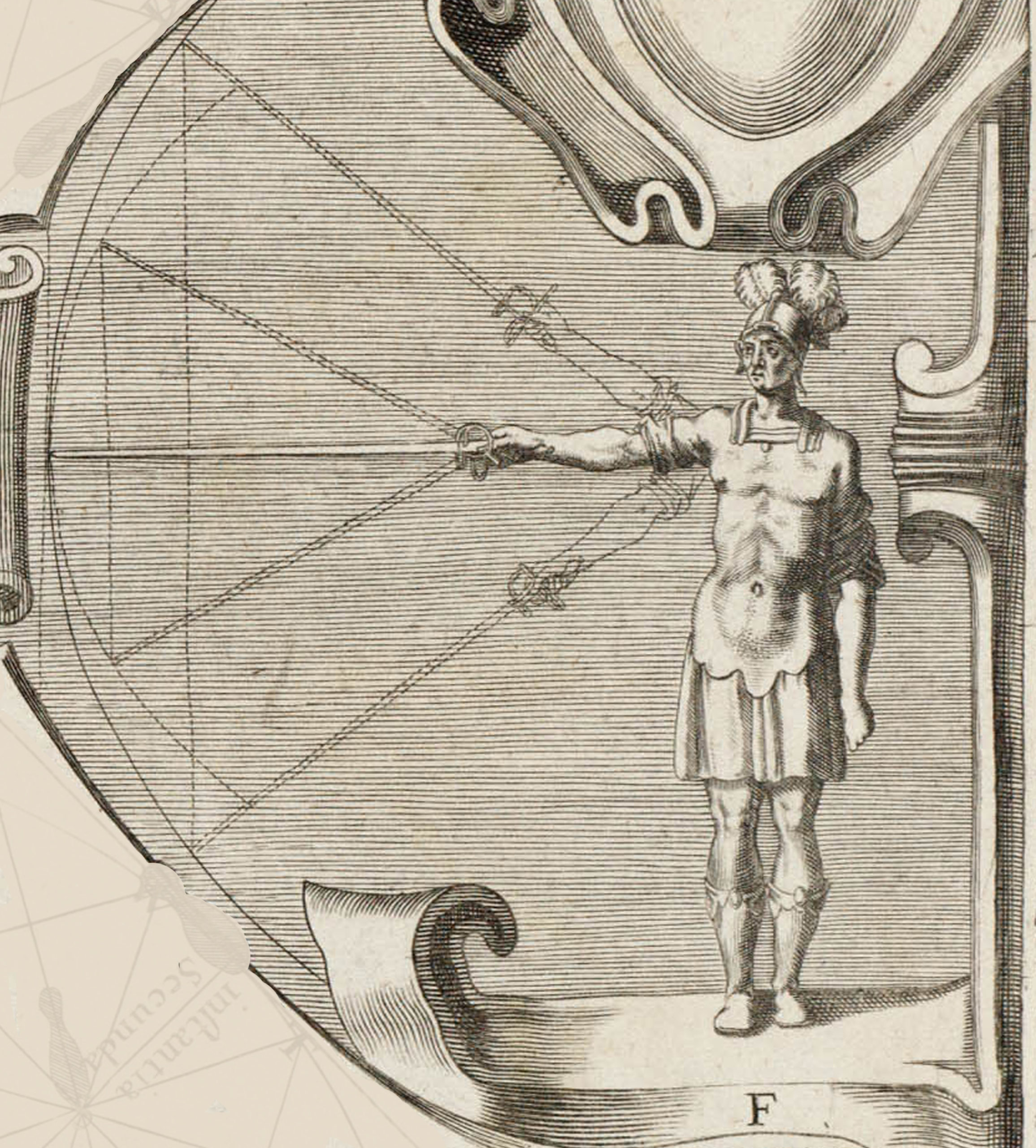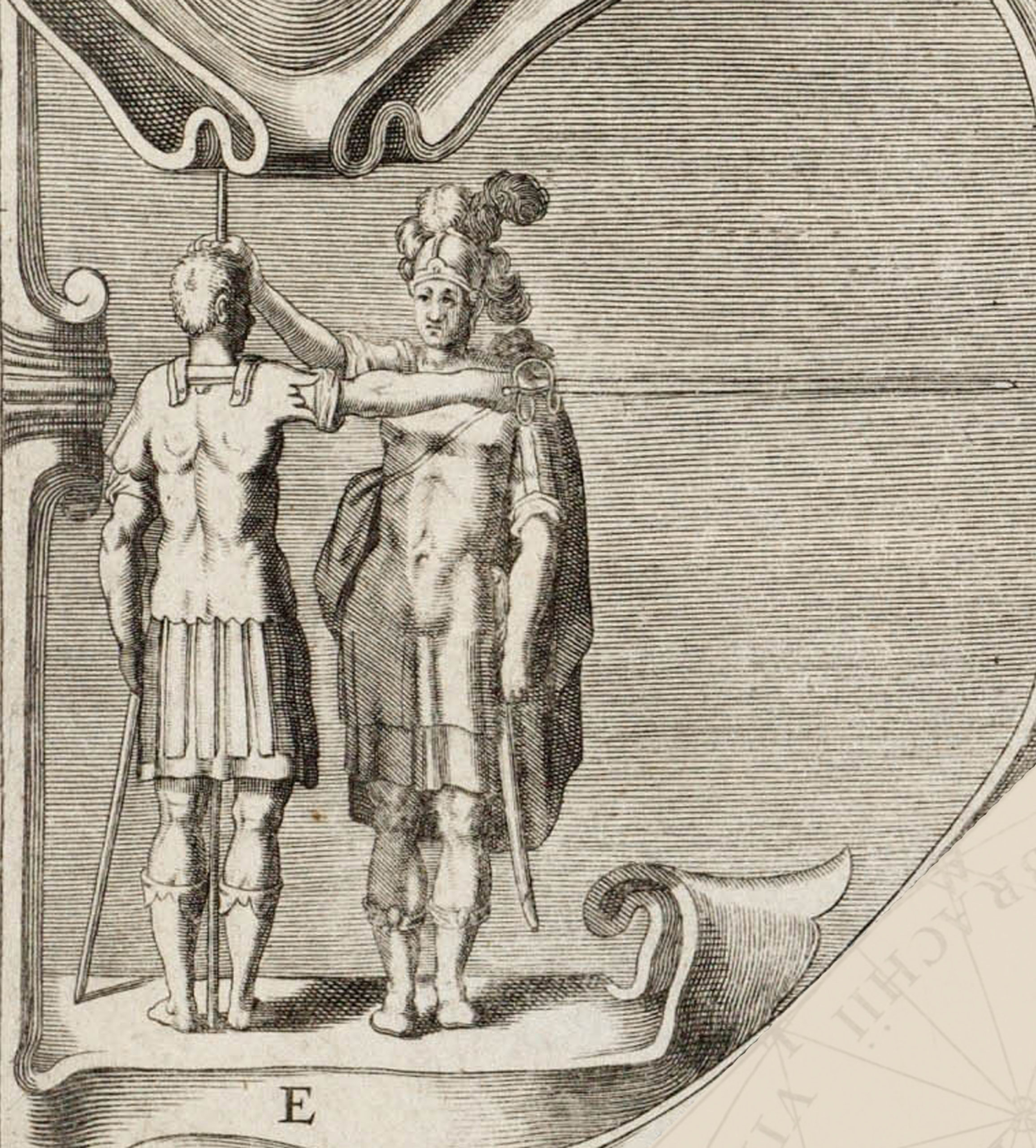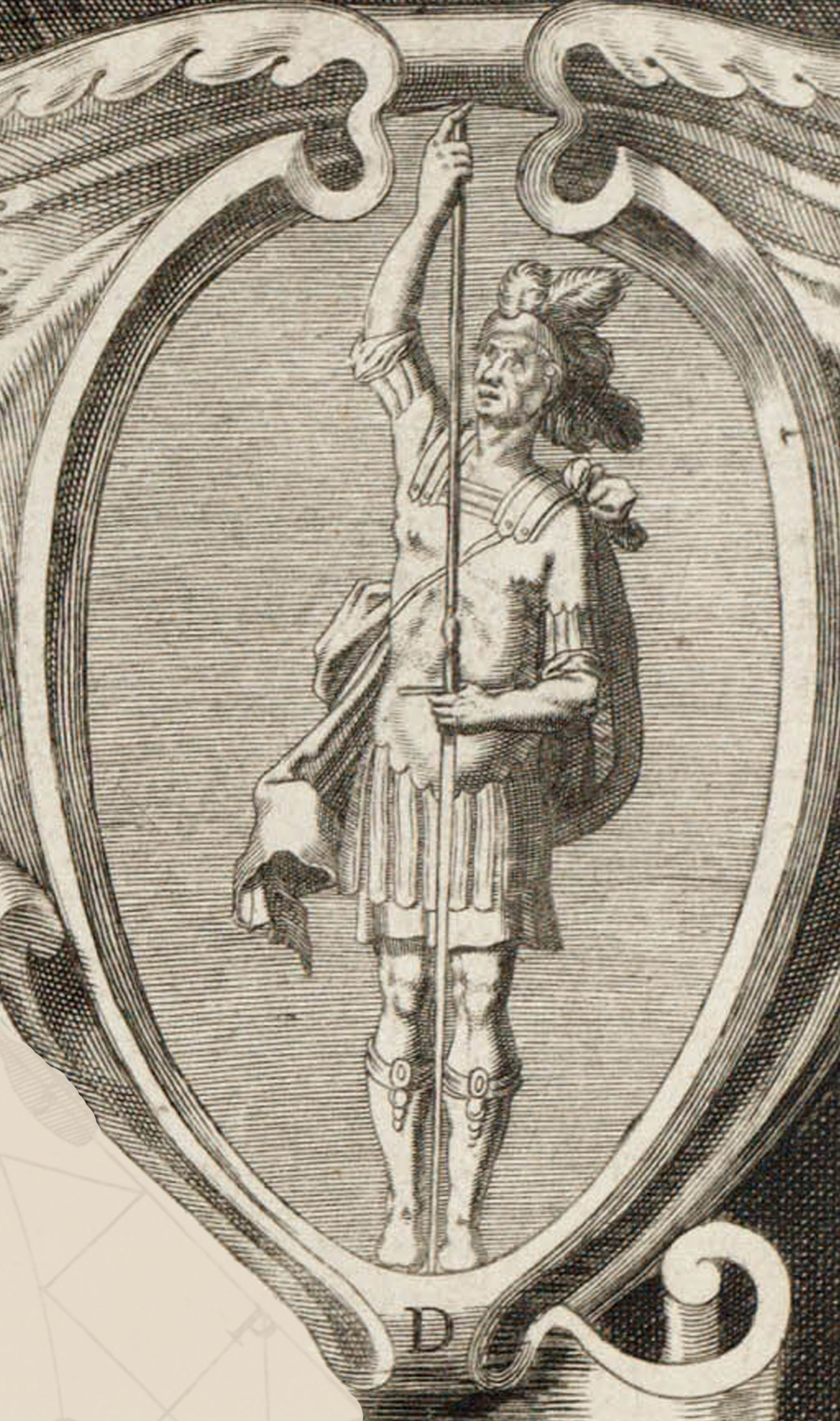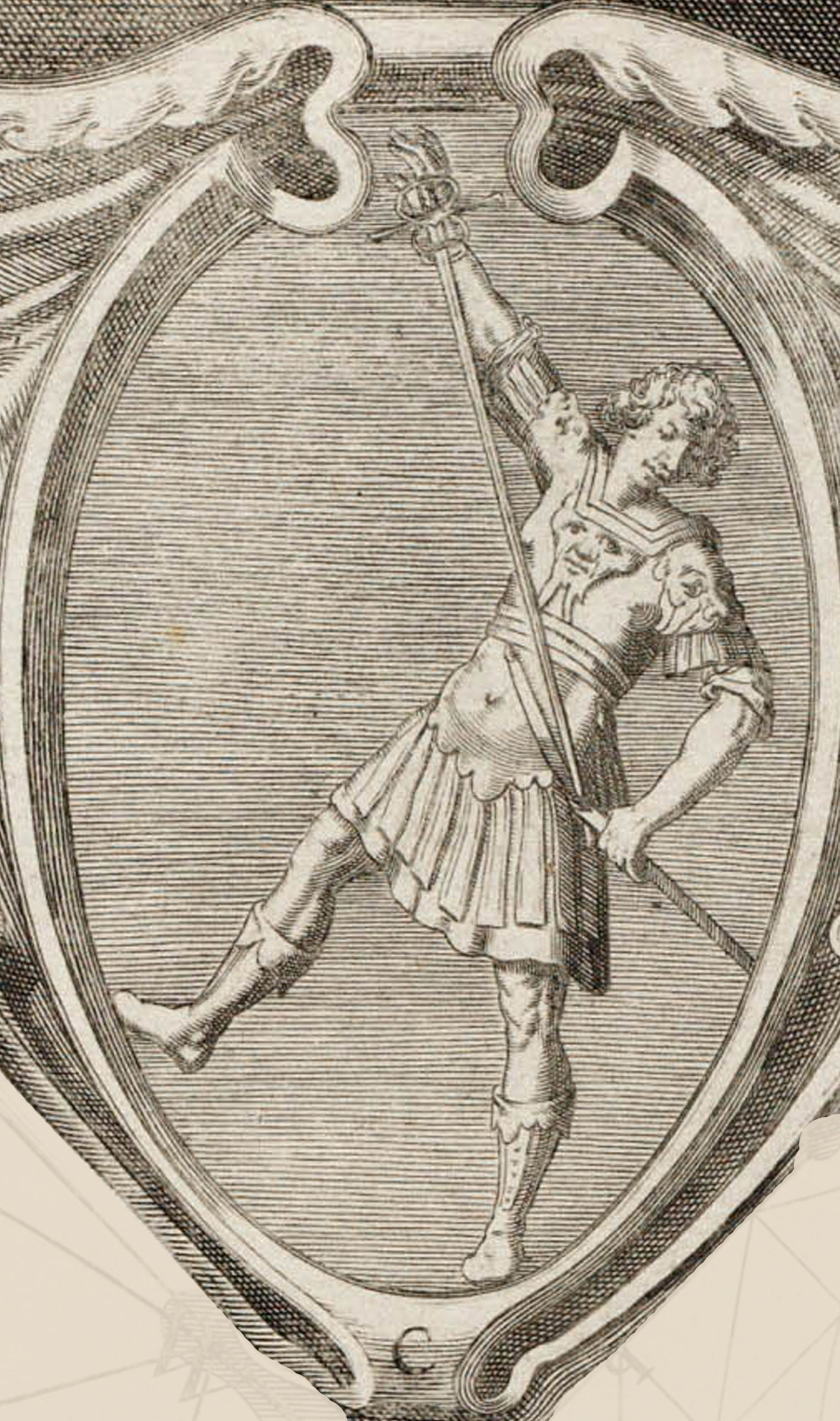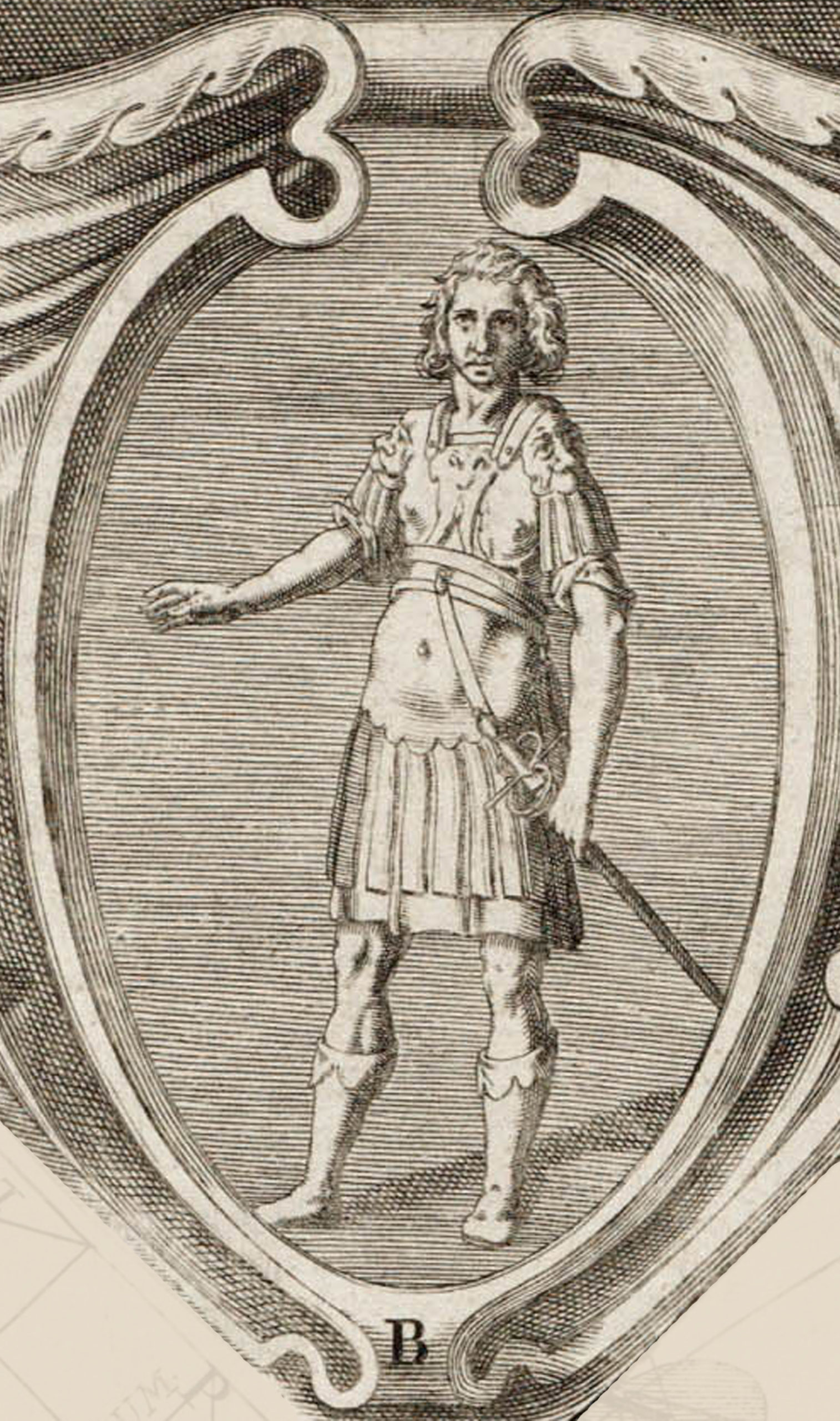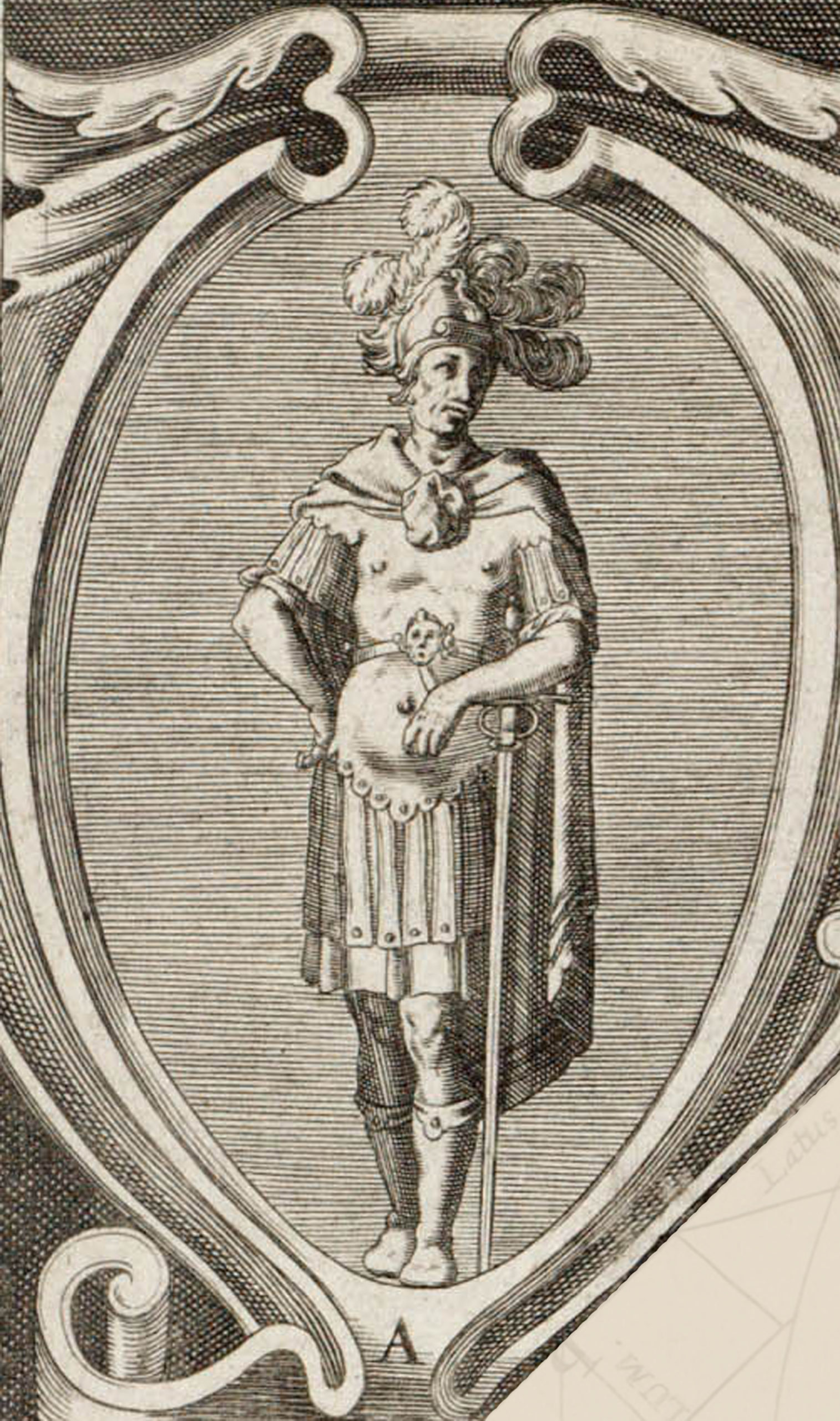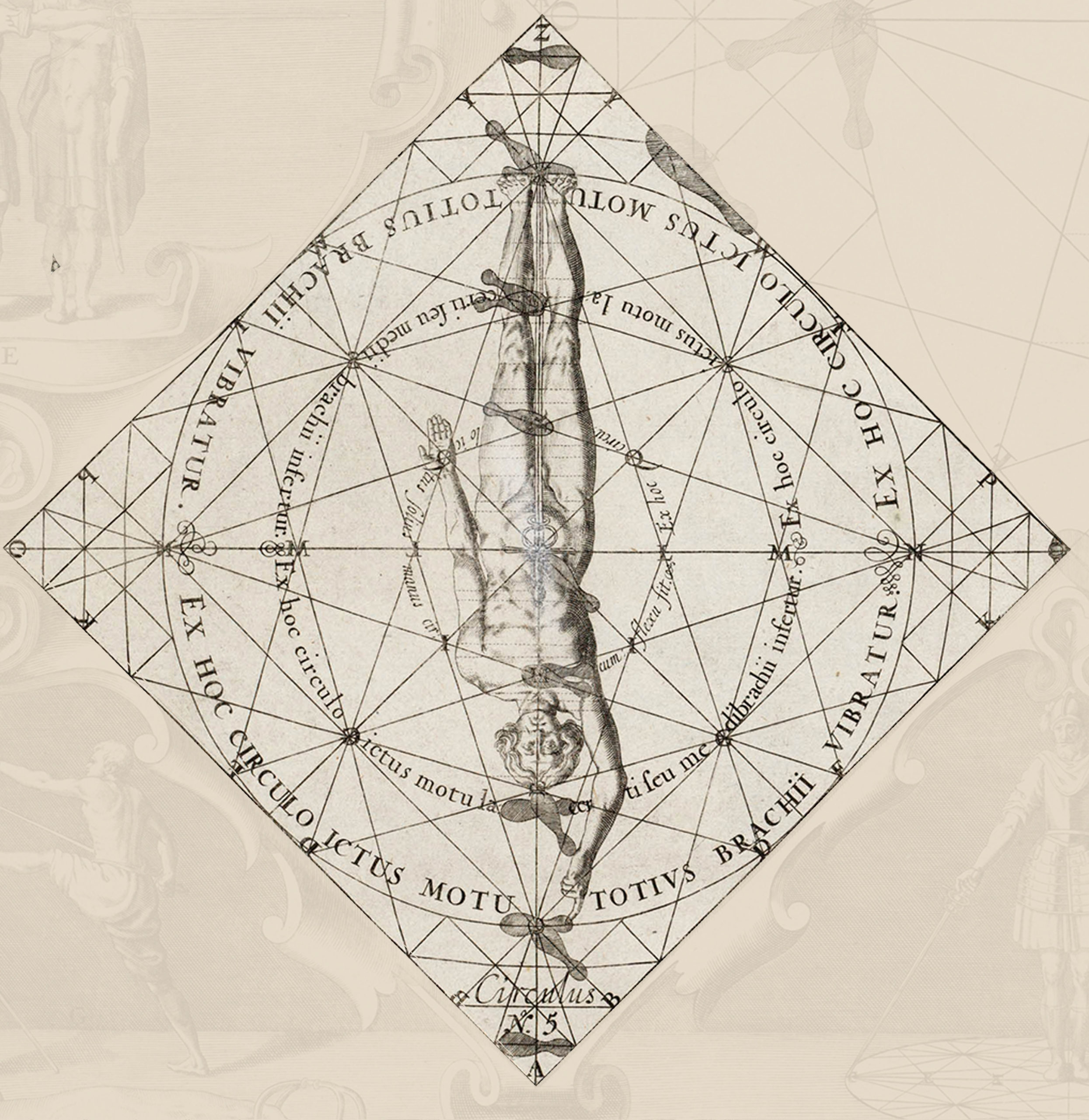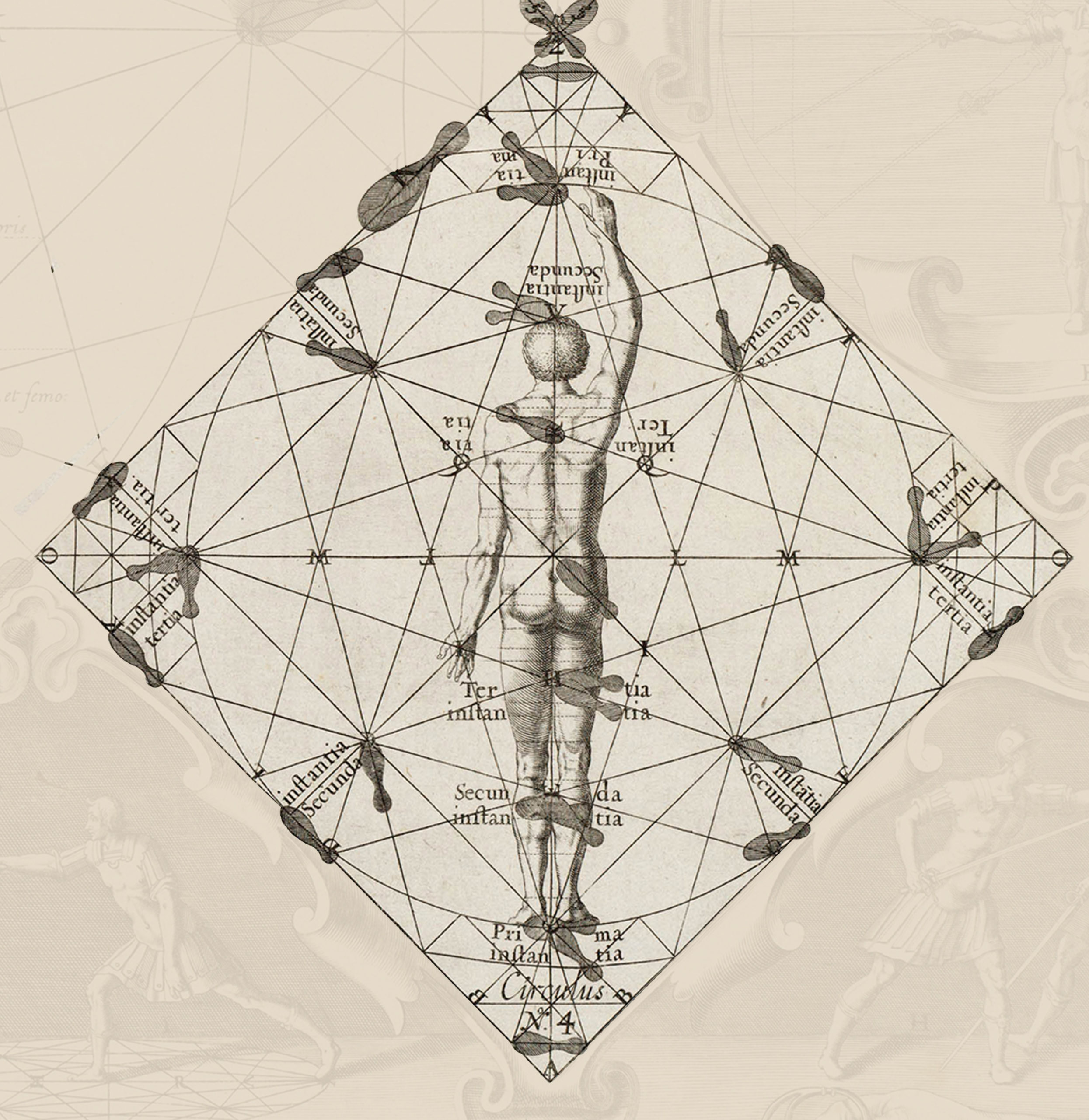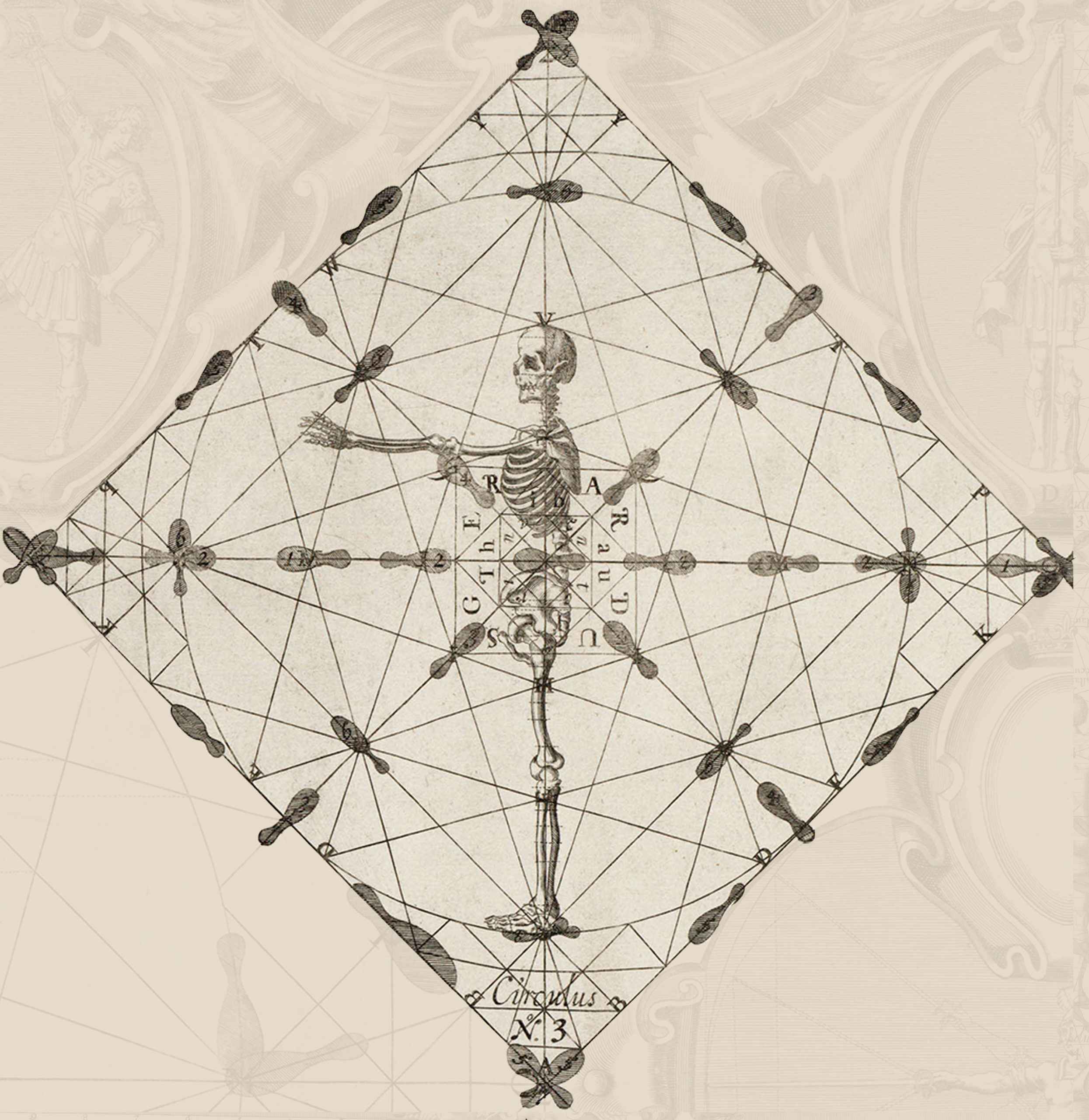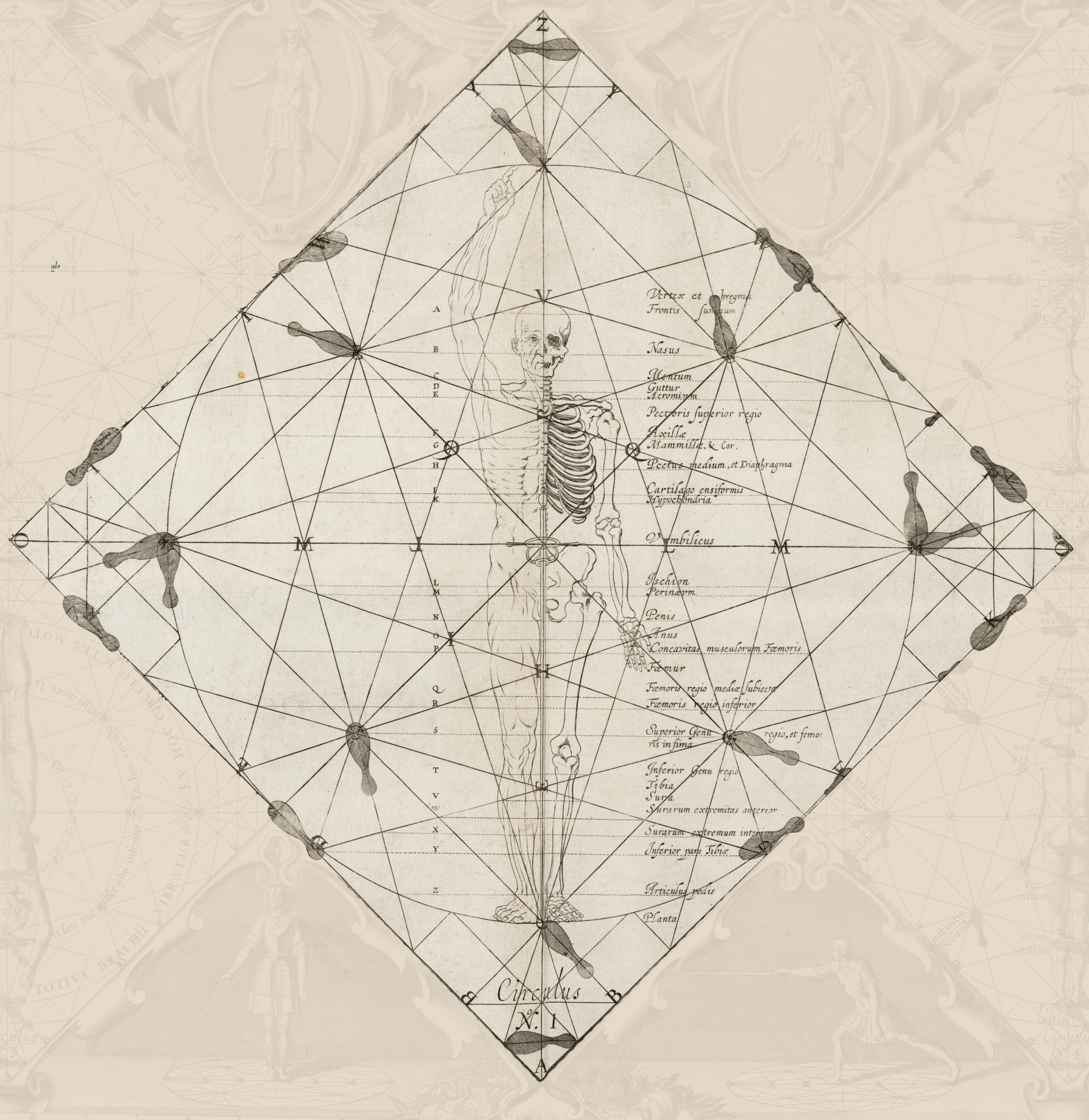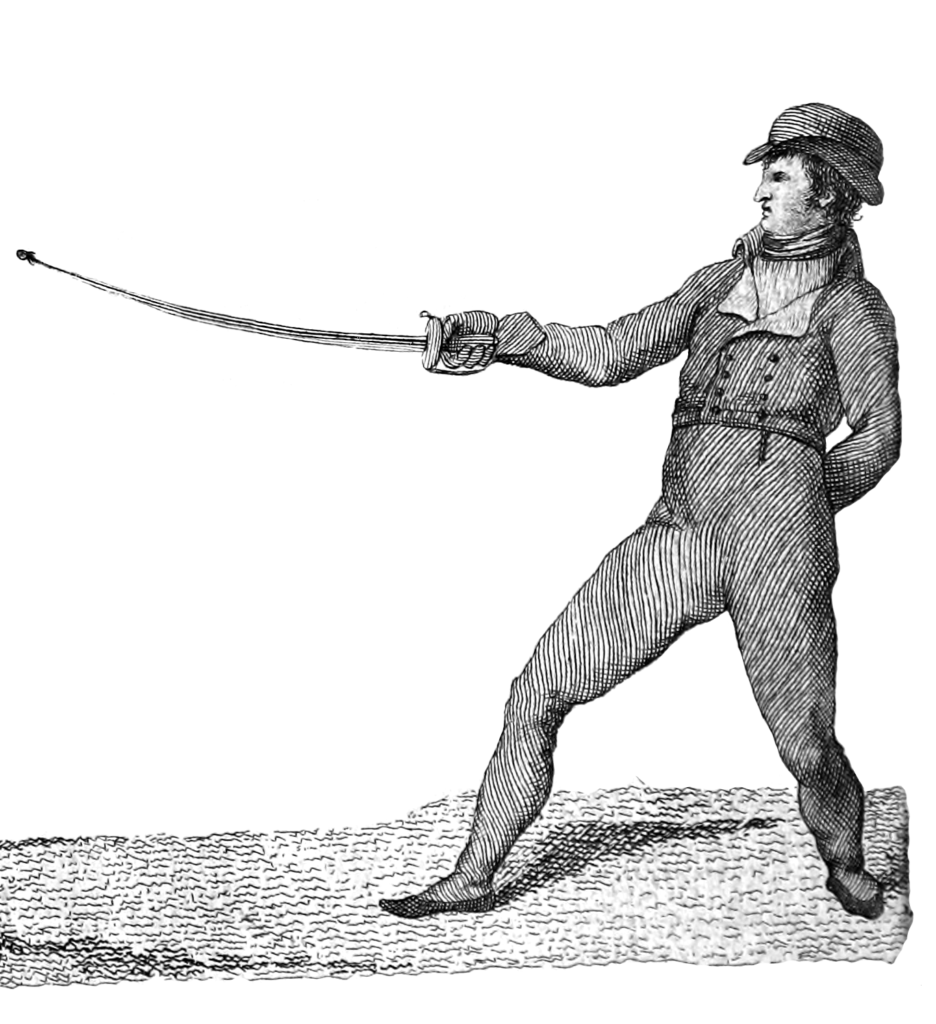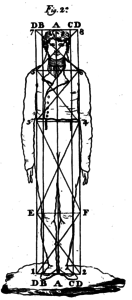
1. The object of this treatise is only to apply the doctrine of the regular handling of the weapon that we call sabre. It would be a waste of time to dwell on tiresome discussions as to whether or not the doctrines expressed are scientific, if liberal art or mechanical, etc. A faculty based on the fundamental principals of geometry, demonstrated with evidence the safest means for defense and opportune offense, whose first object is nothing less than the preservation of life, so continually haunted by our misfortune, should not for a moment doubt that this is a science, more useful, and that it naturally deserves the preference and appreciation of all men. It would also be a superfluous digression to speak here of the various divisions and subdivisions that have been made of this science by various authors. Nor should I stop to give a definition of the sabre because, this being a weapon so well known to all, I think it is only necessary to mention the separate parts that compose it and give them their own names to facilitate their order, as well as the rules by which each should be constructed, along with the use and management each should be given.
2. The first is the grip (plate 1, figure 1), that being the part that serves to hold the weapon in the hand. It must be of a thickness capable of filling it so that there rest comfortably the last two joints of the fingers from their base. It will be one-sixth of the [weapon’s] length and the surface will be covered in ridges (lit. eminences), or done in the handle by channels, or wire wrapped to give greater support.
(1: If the grip is of wood or another fragile material, it is reinforced with a back-strap of metal that wraps around the head of the grip and runs its entire length on the part corresponding to the back of the blade until it touches the plate. It is held firm with a rivet pin.)
3. The second is the guard, which is divided into the lower and upper. The lower, or shell (B) consists of a plate and a hook (C). The plate should not be pierced as it is meant to defend the hand from blows with the point. The hook (C), which corresponds to the back of the sword, must extend an inch out of the shell and will be bent forward to serve against strikes gliding down the back of the blade so that the arm is not wounded by the cut.
4. The upper guard is divided into the Principal (D), which corresponds to the edge of the sabre, and the Bend (E), which corresponds to the plane on the right side of the blade with the edge looking at the ground, their names are taken from the bend that the guard makes as well as the simple one of the principal. This rises from the plate (B), keeping in the direction of the blade, ending at the picolete (1) or the upper part of the grip. The bends are born from the same plate and are more distant on the plane of the sabre nearest the hook, having in the middle one or more curves, their concavity sufficient that the hand is not oppressed by them.
5. The blade of the sword will be three feet long (1), its curvature will be measured by pulling a straight line from the heel (F) to the tip (G), and in the place furthest from that line (H), the curve shall have a diversion of 2 inches at most and as little as one and a half. The concave portion has a spine or blade reinforcement of twenty-seven inches long from (F) to (R), and the rest up to thirty-six (G) will be a cutting edge. It will be divided into parts, the line of (R) to (J), and the other curve of (J) to (G). The first will be a little prominent and is called the counter-edge, and the second has the shape of a cats claw, as it is called. The convex part is the edge of the sword. The middle of the spine and edge is called the flat. The width of the blade is divided into four parts. Three are for the channels or half channels that are cut out of the blade. The fourth and last forms the edge, which is in the shape of a cradle, the same as the counter-edge. The blade is divided by its length into two equal parts. The first (L) is called strong, the second (M) weak.
(1. Three geometric feet corresponds to one Castillian Vara)
All of Frias’ measurements are given in Castillian units. I have left them unconverted for the sake of accuracy to the text. 1 Castillian inch is equal to 0.9142 US inches, so the total blade length would be about 32.9 inches (83.57cm), with a 24.7 inch (62.74cm) spine and a 1.37-1.8 inch (1.5-4.57cm) displacement to the curve. Factoring in the ratio given in paragraph 2 above, the blade would be 5/6 of the total length of the weapon, and the grip would make up the remaining 1/6. The grip would therefore be about 6.58 (16.7cm) inches long, giving the sword a total length of about 39.48 inches (100.28cm). It is unfortunate that Frias doesn’t give us any good indication as to how wide the blade should be.
6. The blade should be chosen without hair or rust stains, unless they do not fall when scraped with the fingernail, thus uncovering the bluing. The temper will be tested by placing the tip firmly against a plank, so that its bend describes a semicircle with all of the weak and a small amount of the strong. Stopping this action, if the counter-edge remains bent, it is bad. The spine will be wide and if it is round it will be better to strengthen the blade. The channel, or void, will be better if it is deeper, because hereby comes the lightness of the weapon. The edge is chosen so that the cradle is not too long, as this will make the edge too thin and it will suffer in the parries. The counter-edge must have a prominent cats claw so that it will have enough power to make cutting wounds. The curvature must not exceed the given measures or it will not be able to lead well into blows with the tip and, if it is too small, it will not give good opposition to the parry or have enough power in the cut.
In the first sentence of paragraph 6, Frias uses the word “pelo” which literally translates as “hair.” I have left this translation intact, but I wonder if this might not be more of a colloquialism, perhaps a reference to cracking patterns in the surface steel or bluing.
7. The tang will be thick and long for mounting the sabre and does not have to be heated before it is hit. When you mount the blade, you should open a square in the plate, large enough for the tang, never allowing it to be thinned. The grip should be forced on so that it cannot move, even with effort. The rivet should be thick and formed into a diamond tip with the help of a the hammer and not of the file. These are the circumstances which provide possible security to the combatant.

